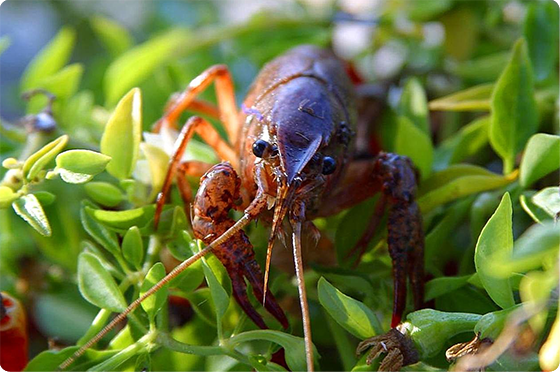
On October 22, the court for the Western District of Louisiana denied a motion for summary judgment in Carline Fisheries. v. Vector Disease Control (No. 6:16-1506, 2018 BL 389535 (W.D. La. Oct. 22, 2018)). According to the aquaculturist plaintiffs in this case, Vector Disease Control (“Vector”), a pesticide spraying company, caused the deaths of numerous farmed crawfish when it aerially sprayed the insecticide Permanone over portions of Iberia Parish in November 2015, as part of an effort to control local mosquito populations.
In 2015, the Iberia Parish Mosquito Abatement District (“IPMAD”) first contacted Vector to schedule mosquito spraying services for some areas of the parish. IPMAD and Vector initially entered into a contract where Vector would spray the insecticide Dibrom on the nights of November 3 and 4 over several specified target areas. The parish identified the target areas through GPS, and Vector confirmed the coordinates with maps. However, before the spraying could take place, IPMAD verbally requested that Vector spray Permanone instead of Dibrom, as mosquitos had built up a tolerance to the latter. Permanone, while lethal to mosquitos, is also “extremely toxic to aquatic organisms, including fish and invertebrates,” according to the chemical’s EPA-approved label. However, IPMAD failed to inform Vector of the presence of several crawfish aquaculture farms located in the target areas, and Vector failed to inquire. Therefore, Vector sprayed the Permanone as planned. On November 5—the day after the second and final aerial spray—crawfish aquaculturists from both inside and outside the target areas began to report animal deaths. Those aquaculturists reported the phenomenon to the local office of the Louisiana Department of Agriculture and Forestry, which sent representatives to test water samples from farm ponds as well as crawfish specimens themselves. The samples each tested positive for the presence of permethrin, the active ingredient in Permanone. Upon learning of this, the affected farmers filed suit against Vector in October 2016, alleging it had failed to follow EPA label directions and negligently sprayed Permanone over their crawfish ponds. Vector’s responding motion for summary judgment alleged that the plaintiffs could not establish their negligence claim because, first, Vector did not breach its duty of care and, second, several of the plaintiffs lacked causation for their claims.
In deciding this motion, the court first looked to Vector’s argument that there was no breach of duty. To this, Vector claimed that its actions were undertaken at the direction of IPMAD, which chose the chemical type, concentration per acre, location of target zones, and timing of applications. Vector argued it made no decisions in those determinations, and, therefore, could not have breached a duty to the plaintiffs as alleged. However, the court disagreed and noted that Vector owed at least some legal duties to the plaintiffs regardless of IPMAD’s instructions. In particular, the court pointed out that Vector still had the duty to follow the EPA label that accompanied the Permanone. The court specifically drew attention to a portion of the insecticide’s label that advised weather conditions should be favorable prior to spraying so the chemical would move away from water and minimize incidental deposits. Because there were still outstanding questions regarding the weather patterns on the nights the insecticide was sprayed, the court held that it could not grant summary judgment as to this point.
Second, the court analyzed Vector’s argument that certain plaintiffs could not establish it caused any crawfish death in their ponds, as the farms in question were located outside the target areas where Permanone was sprayed. To this, Vector also argued that each of the Plaintiffs acknowledged they did not see Vector conducting aerial spraying over their ponds. However, the court again declined to grant summary judgment. It first reiterated that there were outstanding questions about the weather patterns on the nights spraying occurred, thus making it difficult to determine whether the weather was suitable to deter chemical drift into the crawfish ponds. Furthermore, the court pointed to the parties’ conflicting expert testimony regarding whether the amount of Permanone sprayed was sufficient to cause the crawfish kill. Accordingly, the court held that it would be premature to decide the point in summary judgment while such questions remained.
Because Vector could not meet its burden of proving either of its claims, the court denied its motion for summary judgment, thus allowing the lawsuit to proceed. However, while the court was careful not to comment on the merits of the case, it did note that the plaintiffs seemed to rely on cases that were decided under an inapplicable legal theory in their arguments. Plaintiffs will have to rectify this error as well as eliminate any other major flaws in their analysis if they wish to prevail against Vector when the case itself goes before the court. Only time will tell who will prevail in this lawsuit—the defendant pesticide sprayer or the plaintiff aquaculturists.












